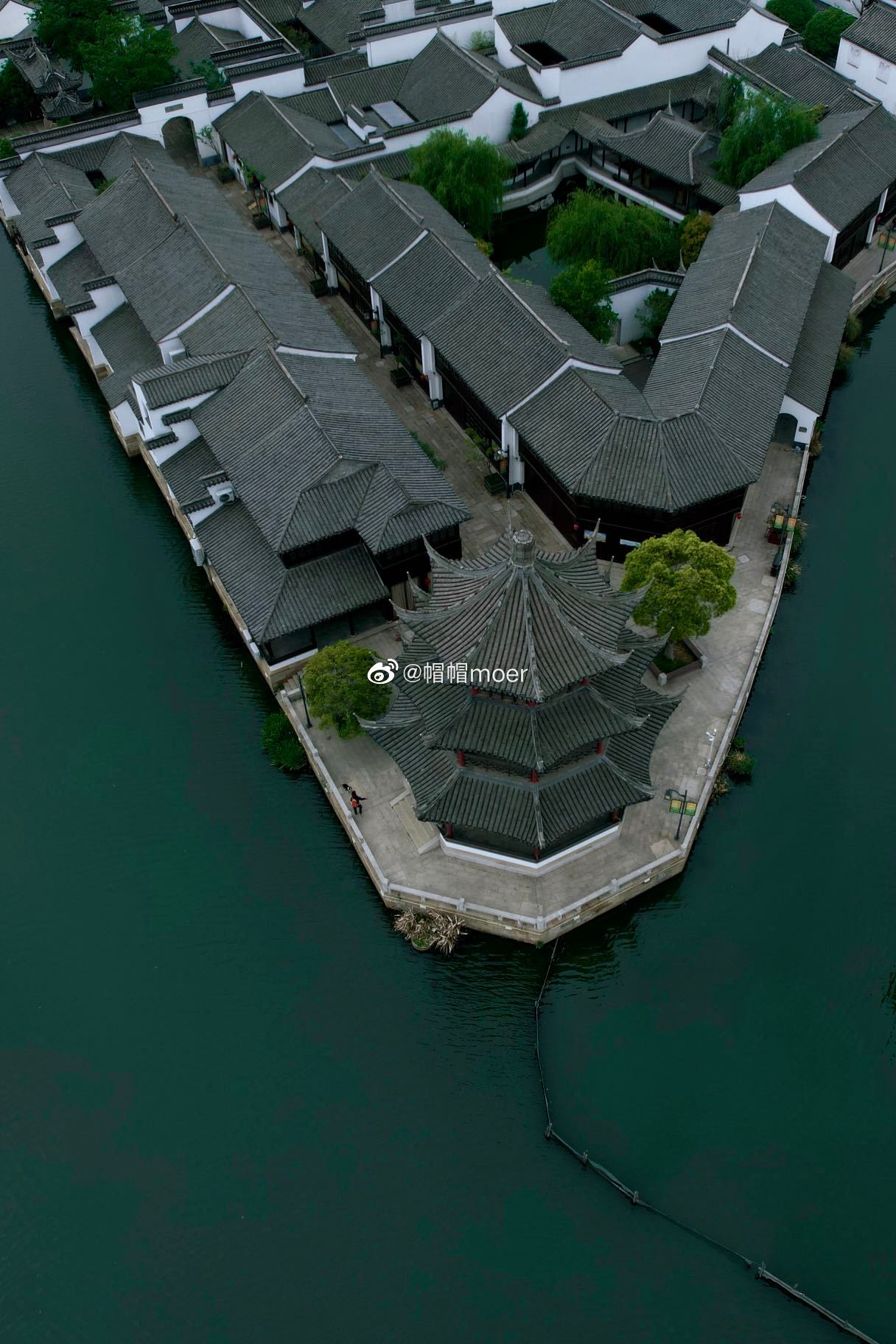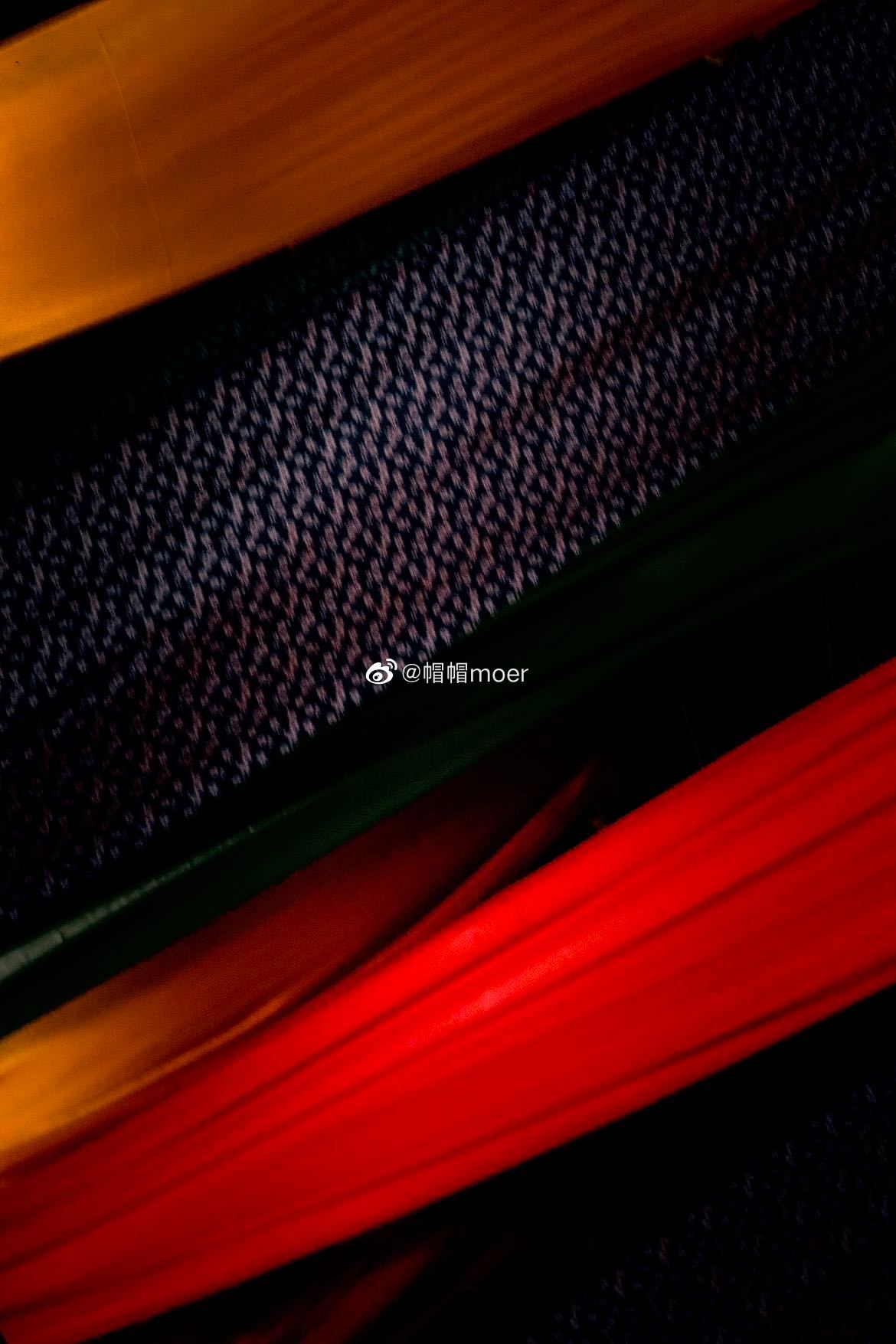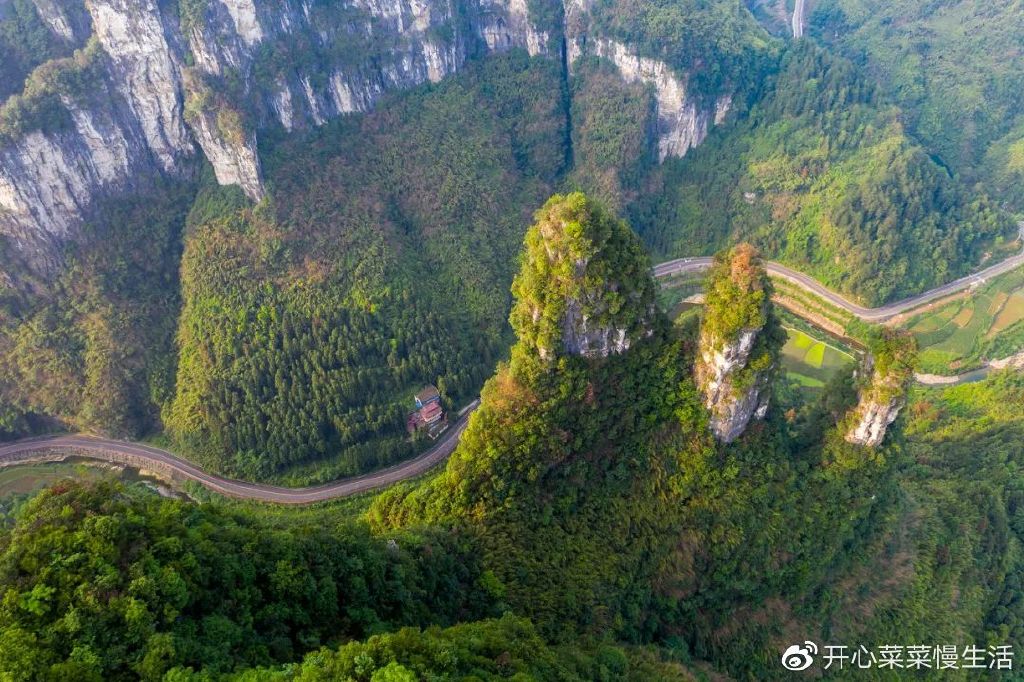Surrounded by city rivers, with small bridges over flowing streams, whitewashed walls, and black-tiled roofs, Changshu’s winding, deep lanes exude a timeless charm. Seven streams lead to the sea, and half of the green hills enter the city, creating a natural landscape of vast reeds and crisscrossing water lanes. During the golden autumn, the city’s crabs are plump, and fish and shrimp are fresh, making it a culinary paradise.
Upon first visit to Changshu, you’ll be captivated by the slow pace of life. Each day is comfortable and leisurely, a stark contrast to the hustle and bustle of modern life, making you want to stay and calmly do what you love.
In fact, Changshu is a city with a history spanning thousands of years. It boasts stunning cultural landscapes, beautiful mountains and rivers, and abundant resources. With a rich cultural heritage and a glorious history, the Yushan mountains are bright and clear, with beautiful scenery, surrounding peaks, and lush forests. Here, the Shahe Bang reeds bloom, rice fragrances, and willows line up in rows. The Yushan National Forest Park and Shanghu Lake are adjacent, with lake and mountain scenery complementing each other. The city experiences distinct seasons, a mild climate, and abundant rainfall, and the local customs are simple and full of vitality.
At night, the water town among the reed marshes is serene. Shahe Bang Scenic Area, located in the south of Changshu City, is nestled between picturesque Yangcheng Lake and sparkling Kuncheng Lake, facing the Yushan mountains across the lake. The climate is pleasant, the land is fertile, the water is beautiful, the products are abundant, and the local customs are simple, earning it the nickname ‘Land of Fish and Rice’ in the south of the Yangtze River.
During the Anti-Japanese War period, the New Fourth Army soldiers and the people of Shahe Bang jointly composed many magnificent battle poems. The Peking Opera ‘Shajiabang’, based on these materials, is well-known, making Shahe Bang famous far and wide. The most famous character in the play is Aunt Qing.
If you ask me how beautiful Shahe Bang is, I must recommend visiting at night. The night scenery of Shahe Bang is like a quiet town, with small bridges over flowing streams, lanterns hanging high, and reflections on the water surface, which is excessively beautiful. The stone bridges along the river, the riverside residences, and the dyeing workshops all make one feel like traveling back to a past era.
The highlight of the night tour in Shahe Bang is the live performance. Taking the old street of Hengjing as the scene, combining the classic anti-war stories of Shahe Bang and the cultural style of the Republic of China, it integrates real person performances with multimedia, ice screen projection, and other technologies, creating a night tour performance that combines outdoor immersive, progressive scenes with theater performances, giving people a fresh feeling.
In April, Changshu is gentle, and the flowers and trees are lush. I came to this quiet and stable city at the time of Grain Rain. The ancient temple of Qiliang under the green trees, the pavilions and waterside pavilions in the garden style of the south of the Yangtze River, the winding small bridges, and the towering ancient trees scattered inside and outside the temple are all my impressions of Changshu.
Some people say that Grain Rain, the last solar term of spring, is like a poem by the Song Dynasty: ‘Suddenly looking back, the person is there, in the dim light.’ At the end of the flowers, everything is growing, boiling, and thriving. At this moment, Changshu is more charming and desirable.
In Changshu, there is an ancient house hidden in the bustling market – Yujian·Tang House. It was originally the private garden of Tang Yikui during the Guangxu period of the Qing Dynasty. Through the ups and downs, this old house has witnessed hundreds of years of time passing, and the style of the past is no longer there. Later, it was renovated and transformed by the designer You Weizhuang, and the original taste of the old building was preserved, now it has become a boutique homestay.

Yujian·Tang House has a total of 20 rooms, and is divided into three themes of ‘forest, shadow, leisure’ for residence, with a strong Zen atmosphere and a quiet and comfortable environment, becoming the best place to cultivate one’s body and mind. Guest rooms themed around ‘forests’ are elegantly situated on the first floor north of the Tang Residence, with antique and refined furnishings that exude a strong sense of traditional Chinese style. The interior is imbued with an ancient charm and elegance.
Within the Tang Residence, there is also an exclusive private villa, an independent courtyard residence that accurately reproducesChangshu has truly mastered the minimalist Chinese aesthetic. In the small town of Changshu, I saw the minimalist Chinese aesthetic, with white walls and green tiles, small bridges over flowing water, and maple leaves drifting by.
Changshu’s old factory buildings are so beautiful, with white houses, red roofs, and towering trees. Besides drinking tea and eating noodles in Changshu, you can also visit the characteristic Blue Forest Cultural and Tourism Industrial Park. Strolling on the fresh streets, your mood becomes pleasant.
In the 1980s, there was an electrical ceramics factory at the southern foot of Yushan Mountain, mainly producing insulating ceramics. Now, when you visit this place, if you don’t pay close attention to some details, you would never guess its ‘past life’. White factory buildings exude a fashionable aura at every turn, with hammocks and artistic graffiti adorning the park, transforming it into a colorful world where greenery is visible amidst the dappled light and shadows. Upon entering the park, one is immediately struck by the large chimney, once an indispensable part of the ceramics factory, now the most conspicuous landmark of the area. The industrial park preserves nearly a hundred camphor and sycamore trees, these towering giants stand as a testament to the city’s development and transformation, while also bringing endless ecological vitality to the park. Coffee culture is just one aspect; the handmade culture of the industrial park has become an ideal destination for family team-building activities. In addition to traditional cultural crafts, a group of trendy elements such as the Oxhead People’s Caravan and the Mu Yuan Outdoor Club are concentrated here, making it the most fashionable cultural hub. The rich aroma of life soothes the hearts of mortals. At the foot of Yu Mountain in memory, a quiet transformation is underway. If you have the chance to spare half a day, it’s worth lingering a little longer.
?Tips:
1. The coffee at the entrance is a must-try. Sitting outdoors with sunlight and a carpet of sycamore leaves creates a very atmospheric setting.
2. There is a Turkish café inside, serving authentic Turkish coffee with an excellent flavor.
Guli Town is a renowned national historical and cultural town, known as the ‘Land of Benevolent Wind’ and famous for its book collection. The current Gulin Town was formed by the merger of the original Gulin Town, Miaoquan Town, and Bai Mao Town, and is commercially prosperous due to its proximity to the city center.
Guli Town is located at the confluence of Qingdun Pond, San Ya Port, and Qingshui Port, with a dense network of waterways, making it a hub for fishermen to dock and gather. The town has a long history, with prosperity beginning in the late Yuan and early Ming dynasties. By the mid-Qing dynasty, there were four major commercial families in the town—Qu, Liu, Ding, and Wang—leading to a thriving commercial economy. The town had two main streets running north-south and three running east-west, with the southern street along the market river being the most prosperous, lined with various shops.
The main road paved with bluestone slabs is flanked by ancient buildings with white walls and black tiles, adorned with vermilion doors and windows. Imagine a girl in red against this backdrop of white walls—what a striking scene it would make. If you grow tired from walking, you can casually step into a shop for milk tea or coffee and enjoy a leisurely moment.
The most famous landmark here is the Tieqin Tongjian Building. The Qu family’s Tieqin Tongjian Building is one of the four great libraries of the Qing Dynasty in China, renowned both domestically and internationally, with over 100,000 volumes of rare and fine books. It is in the same league as the Yang family’s Haiyuan Pavilion in Liaocheng, Shandong, the Lu family’s Bisong Building in Gui’an, Zhejiang, and the Ding family in Qiantang, Zhejiang.
Located in the center of Gulin Town, the building was constructed during the Jiaqing period of the Qing Dynasty in 1796 and has a history of over two hundred years. Unfortunately, it suffered greatly during the war years due to the ravages of war and the passage of time.

The entire ancient town is filled with the charm of Jiangnan, as if still narrating the glory of its past. The tranquil and scholarly ancient town, stripped of the dust of history, continues to carry its pride into the new era. Changshu Gulin can offer you a unique interpretation of Jiangnan’s beauty.
**Culinary Delights**: Gulin also boasts a variety of delicious foods. In the mid-Qing dynasty, ‘Gulin Fermented Cake’ was already famous. During the Republic of China period, Miaoquan’s ‘Wang Dingxing Small Meat Noodles’ became popular in Changshu’s urban and rural areas. Nowadays,Changshu, a city that unexpectedly captures the heart with its profound beauty, is home to the stunning Xingfu Zen Temple. The temple, nestled in a secluded valley on the northern slope of Yu Mountain, was originally established during the Southern Qi Dynasty when a local official from Chenzhou, Ni De Guang, donated his residence to create what was initially known as Daci Temple. It was later renamed Xingfu Temple in the third year of the Da Tong era of the Liang Dynasty and subsequently referred to as Poshan Temple after the Zhenguan period of the Tang Dynasty.
The temple’s reputation was further enhanced by the Tang Dynasty poet Chang Jian, who penned the poem ‘Inscription on the Back Zen Courtyard of Poshan Temple’, depicting the ancient temple’s scenery. This poem became widely popular, making the temple a renowned landmark in the Jiangnan region. Within its grounds, one can find numerous historical sites, such as the Tang Dynasty pillar, Xingfu Stone, Hollow Pond, and Mi Stele Pavilion.
The temple’s layout, with its central axis and surrounding halls and pavilions, is complemented by eastern and western water pavilions, boathouses, caves, and deep springs, showcasing the beauty of ancient gardens and architecture. The tea culture in Changshu is also fully expressed here, with people gathered in groups of three or two, enjoying tea. The eastern courtyard of Xingfu Zen Temple is a quiet haven for tea, conducive to tranquility.
For those seeking a more lively experience, the agritourism on the mountain next to the temple offers a different kind of engagement. However, for personal peace, Xingfu Zen Temple is the ideal choice. Staying here for a while would provide an excellent opportunity for retreat and reflection.
The Yushan Mushroom Noodle Soup is a unique delicacy that can be savored at a distinctive noodle shop located next to Xingfu Zen Temple. Here, one can not only enjoy the incredibly delicious mushroom noodle soup but also capture the essence of human culture in photography. It is a must-try dish when visiting Changshu.
The people of Yushan would pick fresh mushrooms with dew from the mountain in the early morning and eat them. The people of Jiangnan, advocating simplicity, frugality, and kindness, would send the extra fresh mushrooms to Xingfu Temple. Since mushrooms are best eaten fresh, the temple’s abbot would cook them into a thick soup to preserve their freshness and facilitate storage, which would then be poured over the noodle soup during meals. This practice has captivated monks and visitors alike, and the reputation of the mushroom oil noodles has spread at the foot of Yushan.
Enjoying noodles and tea in the morning is an indispensable part of life for locals in Changshu. The mornings at Wangyue Tower are always bustling with noise, accompanied by steaming noodles and the chirping of birds in the mountains and forests. A bowl of wild mushroom oil noodles, mixed with various toppings, offers a rich and savory broth that envelops the mushrooms’ deliciousness. The unique, rich flavor of the fungi spreads wildly in your mouth with each bite.
Shanghu Night offers a beautiful blue hour that is a must-visit in Changshu. The scenery is charming during the day, and at night, the lights are dazzling. Board a poetic painted barge to enjoy the water dance night view and the coolness of summer. The water scenery and colorful lights blend perfectly, and the painted barge takes you into ‘Shanghu in the Sound of Oars and Light Shadows’. From dusk to dawn, every hour offers a different beautiful scene. Entering the night park of Shanghu Scenic Area, you are greeted with a dazzling array of lights, with light strips accompanying the steps of pedestrians, one step at a time, scene after scene, the scenery follows you. Through various rendering techniques such as lighting, setting, and multimedia, the night lighting is enriched.
Changshu, with the spring breeze brushing the willows and the clear waves rippling under the small bridges and flowing water, is a poetic Jiangnan treasure city that can satisfy all your beautiful imaginations of spring.Visiting a different place to see the world, you will collect more surprises. Embarking on a journey to new destinations allows you to experience the unexpected and enrich your life with unique memories.









